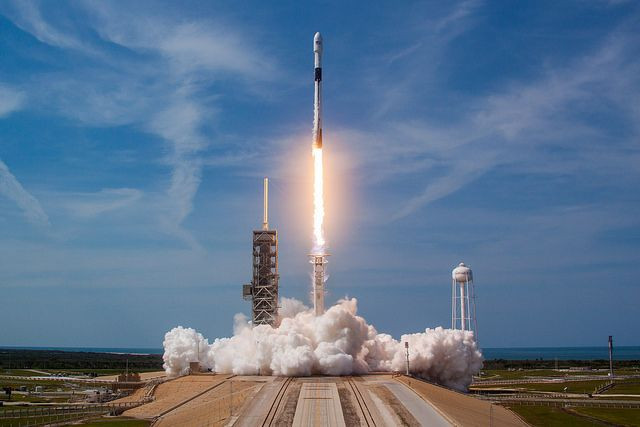SpaceX Launch Live Stream: Falcon 9 Block 5 Rocket Re-Flight Debut

UPDATE: 2 a.m. EDT — In the early hours of Aug. 7, SpaceX re-launched for the first time the upgraded ‘Block 5’ version of its Falcon 9 rocket.
The rocket took off from Florida’s Cape Canaveral Air Force Station at 1:18 a.m. EDT. It delivered an Indonesian telecommunication satellite named Merah Putih into geostationary orbit, about 32 minutes after lift-off.
The first stage of the rocket, flying for the second time, returned to Earth to land on SpaceX’s robotic droneship — Of Course I Still Love You — in the Atlantic Ocean.
Falcon 9 first stage has landed on the Of Course I Still Love You droneship. pic.twitter.com/HCRvCYopuM
— SpaceX (@SpaceX) August 7, 2018
Original story:
In the early morning hours of Aug. 7, SpaceX plans to re-fly the upgraded ‘Block 5’ version of its Falcon 9 rocket for the first time.
In a Twitter announcement, the company confirmed the vehicle would take off from Florida’s Cape Canaveral Air Force Station. The two-hour-long window for the launch will open at 1:18 a.m. EDT and the whole event, as always, will be live-streamed by the private spaceflight company.
As part of the mission, the re-flying Falcon 9 will deliver an Indonesian telecommunication satellite named Merah Putih into a geostationary orbit. The moniker means "red and white,” which are colors of the Indonesian flag.
Falcon 9 will deliver the payload some 32 minutes after lift-off. After this, the satellite will start providing telecommunication services to Indonesia and South Asia, while the first stage of the rocket will return to Earth and land on SpaceX’s robotic droneship, Of Course I Still Love You, according to the SapceX website.
The first stage that will be re-flying on this mission was last used in May when Bangladesh’s first telecom satellite, dubbed Bangabandhu, was delivered into orbit. It landed on the droneship after the mission and has since undergone several inspections and refurbishments to be ready for its second flight.
SpaceX introduced the Block 5 variant of Falcon 9 as the final upgrade to achieve its goal of reusability and cost-savings on spaceflight missions.
Though this particular stage is being introduced after three months of inspections and refurbishments, the company eventually hopes the first stage of the upgraded vehicle would be able to fly into space and back at least 10 times with inspections, and up to a 100 times with minor refurbishments. The previous variant of the rocket, Block 4, could fly just twice before being discarded. However, this particular variant could be the first one to fly three missions — the one scheduled for Tuesday and one more flight sometime in the future.
By 2019, SpaceX hopes to bring down the turnaround time for launching, recovering, and re-launching Falcon 9 to just around 24 hours. This way, the material and workforce requirements to prepare rockets for space missions would go down, leading to more cost-benefits. SpaceX also plans to launch more than 70 satellites atop a single rocket, which would be the single largest shared mission from a U.S.-based space launch vehicle.
All of this, the company hopes, would eventually aid its mission to fly humans to Mars on the Big Falcon Rocket, which is already under development. The 348-foot-long BFR will serve as a massive spaceship and replace Falcon 9, Falcon Heavy and Dragon after coming into operation. It will produce 11 million pounds of thrust at lift-off and will have all necessary facilities to keep the crew comfortable and safe during the journey to the red planet. Also, it would enable high-speed point-to-point travel anywhere on Earth.
© Copyright IBTimes 2024. All rights reserved.





















